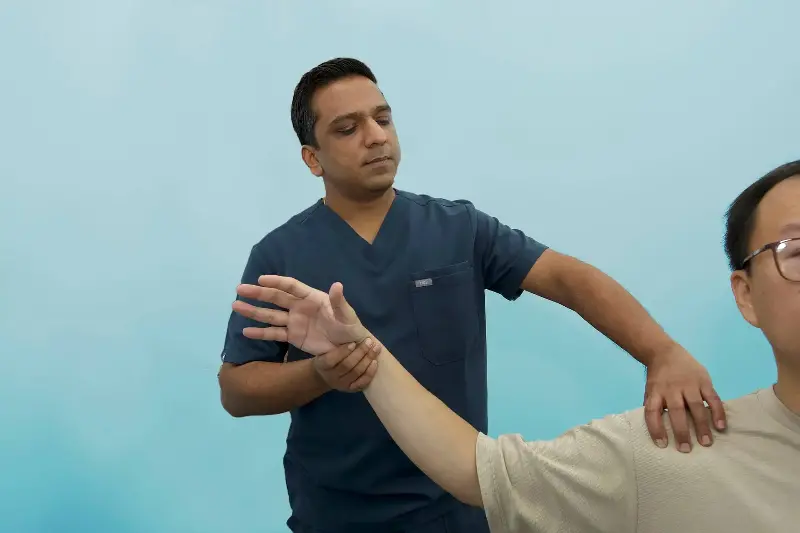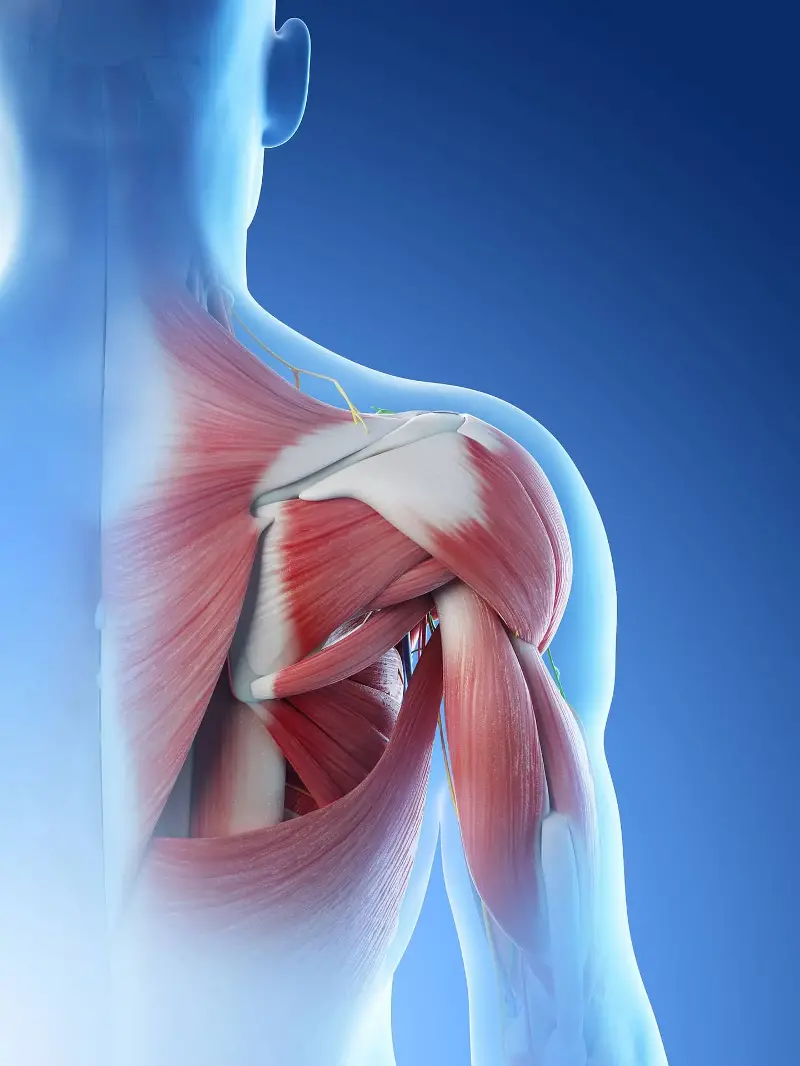
Prevalence and Impact of Shoulder Pain: What If Your Shoulder Pain Does Not Get Better, What is Next?
After lower back and knee pain, shoulder pain is regarded as the third most common musculoskeletal presentation in primary care. Patients who present with musculoskeletal shoulder discomfort have a very poor outcome. On average, 50% of patients still experience symptoms six months after they first presented to primary care. In addition to pain, functional disabilities are also common and may interfere with work, leisure, social and sporting activities. Furthermore, shoulder pain can also be associated with psychological distress and reduced quality of life.
Shoulder pain can significantly impact a person’s life by making even the simplest chores very challenging. Imagine experiencing a sharp sensation that travels through your shoulder or a dull soreness when you wake up every morning. Suddenly, reaching for that routine cup of coffee becomes a test of endurance.
For many individuals, shoulder pain is not just an occasional nuisance. It is a lifelong annoyance that affects all aspects of daily existence. Everyday tasks like combing one’s hair, typing on a computer, or even putting on a shirt are tedious as they lead to pain, discomfort and frustration. In a variety of circumstances, people adapt and look for solutions to cope with their limits, demonstrating their exceptional resilience. But even with a significant pain threshold, it is hard to deny that shoulder pain can turn previously enjoyed pastimes into difficult tasks.

UNDERSTANDING CHRONIC SHOULDER PAIN
The shoulder joint is a complex structure composed of bones, muscles, tendons and ligaments. It is highly mobile but inherently unstable, making it susceptible to injuries and degenerative conditions. Chronic shoulder pain often arises from conditions like:
Rotator Cuff Injuries: Partial or complete tears in the rotator cuff can lead to persistent pain and functional limitations.
Osteoarthritis: Degeneration of the shoulder joint cartilage results in stiffness and pain.
Frozen Shoulder (Adhesive Capsulitis): Inflammation and thickening of the shoulder capsule restrict movement and cause pain.
Bursitis and Tendinitis: Inflammation of the bursae and tendons due to overuse or trauma.
Neuropathic Pain: Conditions such as cervical radiculopathy or brachial plexus injury can contribute to shoulder discomfort.
A thorough diagnostic process is mandatory in the effective management of chronic shoulder pain, with careful evaluation of medical history, physical examination, and judicious application of imaging and other diagnostic modalities. History taking constitutes the initial component of assessment, with special attention on the character of pain, including onset, location, severity, duration, and precipitating and relieving factors. The patient is asked about any past injury, surgery or sickness that might produce the shoulder pain.
A complete physical examination is next done to assess the motion, strength, stability and tenderness of the shoulder joint and immediate surrounding structures. Palpation of anatomical structures can help to identify potential causes of pain, such as the rotator cuff tendons, biceps tendon, acromioclavicular joint and glenohumeral joint. Some provocative tests, such as the Neer impingement test, Hawkins-Kennedy test and Speed’s test, can help to check for rotator cuff impingement, rotator cuff tendinopathy and biceps tendinopathy, respectively. A careful physical examination is crucial in the proper diagnosis of the root cause of a patient’s shoulder pain, given the complex nature of the interrelated components of the shoulder girdle and the extensive list of potential etiologies of pain, impairment or loss of function.
Imaging examinations, such as X-rays, ultrasound, MRI and CT scans, may be necessary to better evaluate the shoulder joint and associated tissues for any damage. X-rays are useful as an initial-line tool for assessing most conditions of the shoulder, but with rotator cuff disorders like shoulder impingement, they must be supported by other imaging methods like ultrasound or MRI scanning. MRI is particularly useful in the imaging of soft tissue tissues like rotator cuff tendons, ligaments and labrum, and can be helpful in the detection of tears, inflammation and other pathology.

MANAGEMENT OF SHOULDER PAIN
Management of chronic shoulder pain ranges from conservative approaches to interventional pain management techniques to surgical interventions. Surgical interventions are generally reserved for patients with chronic shoulder pain who have failed to respond to conservative treatments and interventional pain management techniques.
INTERVENTIONAL PAIN MANAGEMENT TECHNIQUES
Interventional pain management techniques offer a range of minimally invasive procedures that can target the source of pain and provide longer-lasting relief for patients with chronic shoulder pain. These techniques should be considered when conservative treatments have failed to provide adequate pain relief or functional improvement.
Peripheral nerve blocks involve the injection of local anaesthetic agents near specific nerves to block pain signals from the shoulder joint and surrounding tissues. Diagnostic injections around the shoulder are valuable in determining the source of a patient’s pain. Overlapping symptoms and unclear results from physical examinations and imaging often complicate the diagnosis of shoulder issues like rotator cuff tears, acromioclavicular joint pathology, or glenohumeral joint pathology. Hence, injections with anaesthetic agents may help doctors to pinpoint the pain’s origin.
Suprascapular nerve block is a commonly performed nerve block for shoulder pain, targeting the suprascapular nerve as it passes through the suprascapular notch. This block can provide pain relief for a variety of shoulder conditions, including rotator cuff tears, adhesive capsulitis and shoulder impingement. Pulsed radiofrequency uses mild heat to modulate the suprascapular nerve to provide longer lasting pain relief and improved analgesic quality, without disrupting muscle functionality.
Radiofrequency ablation is an interventional pain management technique that uses heat to destroy or disrupt the articular nerves that are transmitting pain signals. This technique can provide longer-lasting pain relief compared to nerve blocks. It is particularly useful for patients suffering from osteoarthritis of the shoulder joint.
Platelet-rich plasma (PRP) is an emerging treatment option that uses a patient’s own blood (autologous) to promote healing and reduce pain. PRP is processed blood with a platelet concentration above the baseline. The normal platelet count may range between 150,000/ μl and 350,000/μl with an average of around 200,000/ μl. PRP has a count of around 1,000,000/μl or higher in 5ml volume of plasma. Platelets are microscopic cell fragments without a nucleus that play a crucial role in coagulation cascade stability. There are seven growth factors recognised in PRP as platelet-derived growth factors: (PDGFaa), PDGFbb, PDGFab, transforming growth factor beta-1 (TGF-b1), TGF-b2, vascular endothelial growth factor (VEGF), and epithelial growth factor (EGF). PRP injections make use of these growth factors which accelerate key stages of healing, and repair cascade of wound, i.e. inflammation, proliferation and remodelling.
For most patients, ultrasound-guided PRP injections can increase their shoulder range of motion for up to a year without causing significant side effects. In the treatment of tendinopathies and rotator cuff injuries, this regenerative method has shown some promising results.

3d rendered illustration of a mans anatomy of the shoulder
POST-PAIN INTERVENTION REHABILITATION
An essential part of pain management is physical therapy. It strives to increase the range of motion, stability and strength of the shoulder joint. Once the painful shoulder has been treated with interventional pain management techniques, your pain specialist will advise physical therapy for improving the strength and function of the shoulder joint.
Post-pain intervention rehabilitation plays a crucial role in the management of chronic shoulder pain, providing a foundation for long-term pain relief and functional restoration. An effective rehabilitation programme is important to regain full glenohumeral range of motion, re- establish dynamic rotator cuff stability, and implement a progression of resistive exercises to fully restore strength and local muscular endurance in the rotator cuff and scapular stabilisers.
Another crucial component of non-pharmacological therapy is activity modifications, which entails determining and avoiding behaviours that make the patient’s pain worse. Patients may need to change their work habits, recreational activities or daily routines to reduce stress on the shoulder joint and allow for healing. Patient education is a crucial component of non-pharmacological management. It empowers patients to take an active role in their own care. Patients should be educated about the nature of their condition, the goals of treatment, and the importance of adherence to the treatment plan.
CONCLUSION
Chronic shoulder discomfort can be unpleasant and limiting, impacting daily activities, employment, hobbies and sleep patterns. While the journey to pain relief may feel overwhelming, there are many treatment options available, from physical therapy and lifestyle adjustments to interventional pain management. Finding the right approach often requires patience and collaboration with your pain specialist, but even small steps toward pain management can make a meaningful difference.
No one should accept chronic pain as a normal part of life. If shoulder pain has been interfering with your daily activities, seeking medical advice can help you to understand your options and take control of your health. If you are experiencing persistent shoulder pain, seeking guidance from a pain specialist can help you to find the most appropriate treatment options. Early management can improve mobility, reduce discomfort and enhance overall quality of life. PRIME
